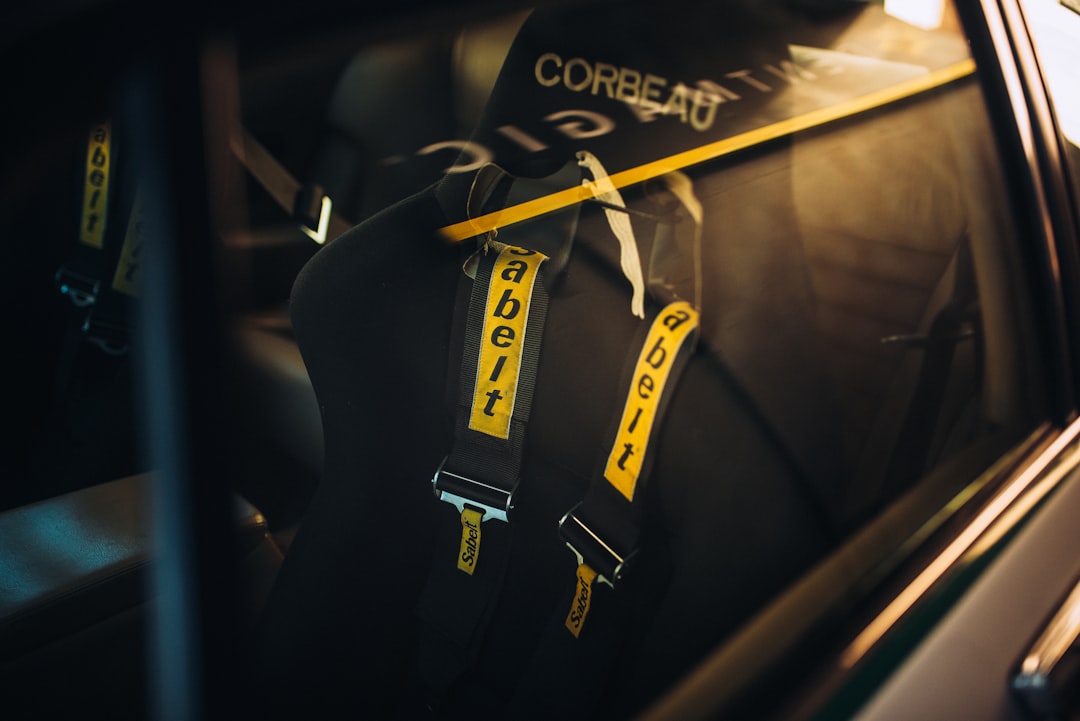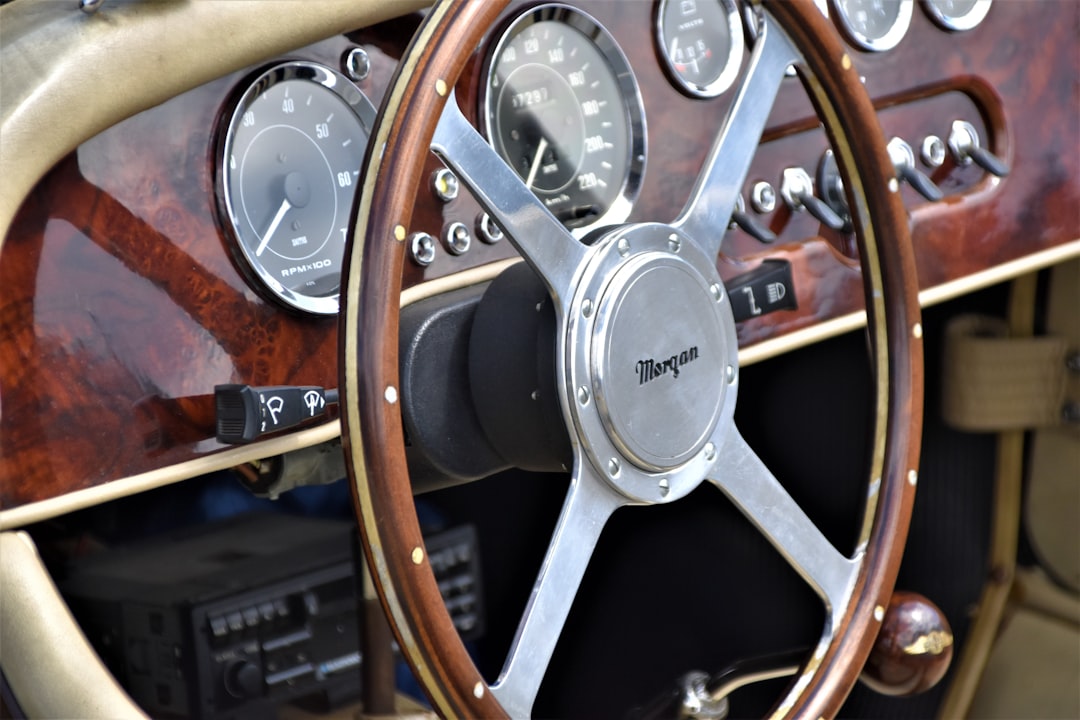
Supercharge your lead generation with a FREE Google Ads audit - no strings attached! See how you can generate more and higher quality leads
Get My Free Google Ads AuditFree consultation

No commitment
Supercharge your lead generation with a FREE LinkedIn Ads audit - no strings attached! See how you can generate more and higher quality leads
Get My Free Google Ads AuditFree consultation

No commitment
Supercharge your lead generation with a FREE Meta Ads audit - no strings attached! See how you can generate more and higher quality leads
Get My Free Google Ads AuditGet My Free LinkedIn Ads AuditGet My Free Meta Ads AuditFree consultation

No commitment
Supercharge your lead generation with a FREE Google Ads audit - no strings attached! See how you can generate more and higher quality leads
Get My Free Google Ads AuditFree consultation

No commitment
In today’s marketing landscape, Google Ads provides automotive accessories businesses with a unique advantage, bridging the gap between traditional offline strategies and modern digital tactics. This platform captures high-intent customers at the moment they're actively searching for products, connecting awareness initiatives with direct sales opportunities. For an automotive accessories business, this means the ability to target niche markets, capture local opportunities, and measure ROI from clicks through to completed sales. However, challenges like missing high-value prospects due to incomplete CRM integration can complicate marketing endeavors. By leveraging predictive insights and real-time audience updates, businesses can target the right customers, ensuring ad spend is both efficient and effective. Google Ads can significantly enhance visibility and drive growth when integrated into a comprehensive marketing strategy, helping automotive businesses stay ahead in a competitive marketplace.

A well-structured Google Ads program is essential for automotive accessories businesses aiming to capture high-intent leads in a competitive digital landscape. Success depends on a seamless integration of data-driven targeting, creative optimization, and rigorous performance measurement, all tailored for the unique buying journey of automotive enthusiasts and professional installers. For a deeper dive into digital advertising approaches, explore this automotive industry guide.
Savvy marketers rely on granular data to pinpoint the moments when potential buyers search for specific fitments, brands, or seasonal accessories. By combining behavioral insights with precise audience intelligence, teams can tailor their Google Ads strategies to reach decision-makers at the exact time they are considering a purchase or upgrade. This precision not only reduces wasted ad spend but accelerates sales velocity and maximizes campaign ROI.
By following this structured approach, automotive accessories businesses can transform their Google Ads for Automotive Accessories Businesses from basic PPC for auto accessories tactics into a sophisticated, data-driven engine for online marketing in automotive e-commerce. Each step, from targeting to attribution, becomes an opportunity to capture, nurture, and convert leads more efficiently and profitably. If you’re ready to streamline your lead generation efforts, get started for free with Sona.

Automotive accessories businesses operate in a market defined by technical detail and fast-moving consumer demand. Precision in reaching enthusiasts and professionals directly searching for specific parts or upgrades allows businesses to capture high-value leads at their moment of intent, ensuring that every marketing dollar drives measurable impact.

Ready to elevate your automotive ads? Get started for free with Sona.

Modern automotive accessories businesses thrive by uncovering growth opportunities that extend beyond traditional paid search and display tactics. Revenue teams achieve measurable gains when they identify untapped channels, develop relevance-driven messaging, and prioritize segments that show strong buying signals. A focused approach to keyword selection, competitor insights, and remarketing ensures each campaign dollar supports clear business objectives—see the Sona blog for more tips on optimizing campaign performance.

Effective audience segmentation elevates Google Ads for automotive accessories businesses by allowing marketers to align every campaign with the distinct motivations of each buyer group. This precision unlocks higher conversion rates and reduces wasted spend, ensuring that messaging and offers reach the individuals most likely to act. For an in-depth look at unconventional Google Ads tactics that can further boost your results, explore these Google Ads tips for auto parts.
Applying robust audience segmentation in automotive accessories advertising empowers teams to deliver personalized, data-driven campaigns that convert. Businesses integrating real-time segmentation and automated audience updates see measurable gains in both efficiency and profitability, setting a new standard for Google Ads targeting in automotive e-commerce. Ready to see results? Get started for free with Sona.

| Industry | Keyword | Monthly Search Volume | Competition Level | Low Bid | High Bid |
| Automotive Accessories Businesses | auto parts companies online | 10 | HIGH | 0.79 | 3.72 |
| Automotive Accessories Businesses | custom car mats near me | 50 | HIGH | 0.7 | 2.77 |
| Automotive Accessories Businesses | car accessory companies | 110 | MEDIUM | 0.63 | 2.25 |
| Automotive Accessories Businesses | auto accessory companies | 110 | MEDIUM | 0.63 | 2.25 |
| Automotive Accessories Businesses | tire repair tools and supplies | 260 | HIGH | 0.44 | 1.69 |
| Automotive Accessories Businesses | car decal store near me | 390 | HIGH | 1.09 | 4 |
| Automotive Accessories Businesses | auto dealer supply | 2900 | HIGH | 1.55 | 6.92 |
Automotive accessories businesses thrive when their search marketing strategy directly reflects the unique needs and purchasing behaviors of their audience. With high product specificity and technical compatibility at the forefront, a well-structured keyword plan ensures ads reach motivated buyers while minimizing wasted spend on unqualified clicks. For ongoing insights into evolving search trends and best practices, consult the Sona blog to keep your approach sharp and data-driven.
A sophisticated keyword strategy for Google Ads for Automotive Accessories Businesses begins with identifying the modifiers and qualifiers that match buyer intent. Incorporating terms like "custom," "eco-friendly," or exact vehicle models (e.g., "Chevy Silverado 2024 bed liner") narrows the audience to those actively seeking a relevant solution. This targeted approach reduces unqualified traffic and increases conversion rates by surfacing ads only to users with a high likelihood of purchasing. For marketers interested in new paid search tactics, resources like Google advertising for auto parts: 5 oddball tips can spark creative thinking in campaign planning.
A comprehensive keyword plan for automotive e-commerce blends aggressive coverage of high-converting purchase terms with broad, intent-driven long-tail opportunities. Coupled with negative keyword management and audience segmentation rooted in behavioral data, this approach consistently delivers optimized, scalable results for automotive product ads. If you’re ready to put these strategies into action, get started for free with Sona and build a smarter automotive search marketing program.
A high-performing Google Ads strategy for automotive accessories businesses requires systematic execution that tightly integrates audience intent, creative messaging, and data-driven refinement. This framework enables marketers to focus their resources on campaigns proven to convert, while minimizing wasted spend on low-value clicks. By applying granular segmentation and real-time feedback loops, auto accessories retailers and B2B suppliers can unlock stronger ROI and scale their online marketing for automotive products.
Successful PPC for auto accessories begins with clustering keywords by accessory type, vehicle compatibility, and search intent. Segmenting keywords into groups such as “all-weather floor mats,” “LED headlight kits,” and “Ford F-150 seat covers” ensures campaigns address distinct buyer needs and match high-intent searches. Prioritizing transactional phrases like “buy car phone mount online” or “best truck bed liner for Dodge Ram” helps capture purchase-ready users, while negative keywords exclude irrelevant vintage or non-fitment queries.
To further elevate targeting, marketers can connect CRM and website engagement data, identifying which visitors have shown repeated interest in specific products. When platforms deliver unified audience insights, advertisers can shift budget towards clusters showing confirmed buying signals, resulting in higher conversion rates and more efficient Google Ads spend.
For additional unconventional tactics that drive auto parts sales, explore these Google Ads tips for auto parts.
Ad creative must speak directly to the pain points automotive buyers face—fitment uncertainty, product quality, and installation ease. Headlines such as “Fits 2018–2023 Jeep Wrangler | Fast Shipping” or “OEM-Grade Brake Pads | Trusted by Professionals” inspire confidence and drive urgency. Integrating dynamic proof points, such as real-time review ratings or low-inventory warnings, leverages behavioral data to reinforce trust and prompt action.
By leveraging historical engagement metrics, teams can A/B test copy variations that resonate with specific segments, refining messages for both DIY car enthusiasts and commercial buyers. Automated audience updates ensure that as leads move through the funnel, the ad copy adapts to their stage, highlighting installation guides for new researchers or bulk pricing for repeat B2B customers.
Landing pages must align tightly with keyword intent and deliver a seamless user experience tailored to automotive e-commerce. Dedicated pages for each accessory type should feature clear vehicle compatibility checkers, high-resolution product images, and trust badges such as warranty details or verified fitment claims. Prominently displaying installation instructions and real-time stock availability increases buyer confidence and reduces bounce rates.
The most effective teams leverage behavioral insights to personalize landing page content—dynamically presenting accessories for the user’s recently viewed vehicle models or surfacing regional best-sellers based on geolocation. Integrating offline sales signals and CRM data enables marketers to track which landing experiences drive not just clicks, but true revenue conversions, including in-store visits for installation services.
Continuous optimization is powered by integrating CRM, ad platform, and website analytics, creating a feedback loop that refines targeting and bidding in real time. By syncing enriched audiences and lead data into Google Ads, marketers can automatically adjust bids for accounts showing new purchase intent or re-engage high-value prospects with tailored retargeting strategies. Advanced conversion tracking bridges online and offline touchpoints, revealing which campaigns influence final sales and helping allocate budget to the most profitable channels.
This unified approach lets automotive accessories businesses dynamically prioritize spend on top-performing segments, keep messaging relevant as leads evolve, and prevent costly delays often caused by disconnected data. The result is a scalable, agile Google Ads strategy that maximizes efficiency and accelerates revenue growth in a competitive automotive market. Ready to streamline your auto accessories campaigns? Get started for free with Sona.
Automotive accessories businesses can accelerate growth by leveraging Google Ads strategies that go beyond basic campaign setup. Successful expansion requires tapping into educational retargeting, high-value upsell, trusted partnerships, local market focus, and continual adaptation to emerging trends. For a step-by-step look at building effective campaigns in this industry, see this guide to setting up Google Ads for auto parts, and explore additional resources on marketing analytics in our blog.
Employing these tactics with integrated platforms unifies online and offline conversion tracking, enables seamless CRM and ad sync, and continually refines targeting as buyers move through the funnel. This cohesive approach drives measurable results, helping automotive accessories businesses secure deeper market penetration and sustainable growth. To see how these strategies can work for your team, get started for free with Sona.
Navigating the world of Google Ads for automotive accessories businesses can be a complex endeavor, but it doesn't have to be an insurmountable challenge. By understanding the unique dynamics of this niche market and applying targeted strategies, you can elevate your advertising efforts to new heights. From choosing the right keywords to crafting compelling ad copy, each element plays a crucial role in driving visibility and sales.
We've explored the core challenges you face: standing out in a competitive market, optimizing ad spend, and ensuring that your ads reach the right audience. By leveraging best practices such as precise targeting, utilizing data-driven insights, and continuously refining your campaigns, you can effectively overcome these hurdles. The solutions discussed here aim to empower you with practical tools and strategies to enhance your Google Ads performance.
Imagine the possibilities when your advertising efforts resonate perfectly with your target audience, leading to increased engagement and sales. By embracing these strategies and implementing them effectively, you position your business for transformative growth. The journey to optimizing your Google Ads campaigns is not just about overcoming obstacles; it's about unlocking new opportunities and achieving sustained success.
To experience the full potential of a unified approach to your advertising strategy, start for free to explore our platform's capabilities today. Let us support you in transforming your Google Ads campaigns into a powerful driver of growth for your business.
The best strategies include leveraging data-driven targeting, integrating cross-channel strategies, refining keyword and audience targeting, creating conversion-optimized landing pages, and continuously optimizing performance with real-time insights.
Optimize by using intent-driven keywords, personalizing ad copy and landing pages, syncing CRM data for precise audience targeting, and employing real-time performance analysis to adjust bids and budgets.
While the article does not specify an exact budget, it suggests that efficient allocation should be based on granular audience targeting and real-time performance data to maximize ROI.
Effective ad copy should address buyer concerns like fitment and quality, include dynamic proof points like reviews or low-inventory alerts, and adapt to different customer segments with tailored messaging.
Key metrics include conversion rates, ROI, search terms, audience engagement, and ad creative performance. Integration with CRM systems for offline sales tracking is also crucial.
Join results-focused teams combining Sona Platform automation with advanced Google Ads strategies to scale lead generation

Connect your existing CRM

Free Account Enrichment

No setup fees
No commitment required

Free consultation

Get a custom Google Ads roadmap for your business
Join results-focused teams combining Sona Platform automation with advanced Meta Ads strategies to scale lead generation

Connect your existing CRM

Free Account Enrichment

No setup fees
No commitment required

Free consultation

Get a custom Google Ads roadmap for your business
Join results-focused teams combining Sona Platform automation with advanced LinkedIn Ads strategies to scale lead generation

Connect your existing CRM

Free Account Enrichment

No setup fees
No commitment required

Free consultation

Get a custom Google Ads roadmap for your business
Join results-focused teams using Sona Platform automation to activate unified sales and marketing data, maximize ROI on marketing investments, and drive measurable growth

Connect your existing CRM

Free Account Enrichment

No setup fees
No commitment required

Free consultation

Get a custom Google Ads roadmap for your business
Over 500+ auto detailing businesses trust our platform to grow their revenue
Join results-focused teams using Sona Platform automation to activate unified sales and marketing data, maximize ROI on marketing investments, and drive measurable growth

Connect your existing CRM

Free Account Enrichment

No setup fees
No commitment required

Free consultation

Get a custom Google Ads roadmap for your business
Over 500+ auto detailing businesses trust our platform to grow their revenue
Join results-focused teams using Sona Platform automation to activate unified sales and marketing data, maximize ROI on marketing investments, and drive measurable growth

Connect your existing CRM

Free Account Enrichment

No setup fees
No commitment required

Free consultation

Get a custom Google Ads roadmap for your business
Over 500+ auto detailing businesses trust our platform to grow their revenue
Our team of experts can implement your Google Ads campaigns, then show you how Sona helps you manage exceptional campaign performance and sales.
Schedule your FREE 15-minute strategy sessionOur team of experts can implement your Meta Ads campaigns, then show you how Sona helps you manage exceptional campaign performance and sales.
Schedule your FREE 15-minute strategy sessionOur team of experts can implement your LinkedIn Ads campaigns, then show you how Sona helps you manage exceptional campaign performance and sales.
Schedule your FREE 15-minute strategy sessionOur team of experts can help improve your demand generation strategy, and can show you how advanced attribution and data activation can help you realize more opportunities and improve sales performance.
Schedule your FREE 30-minute strategy sessionOur team of experts can help improve your demand generation strategy, and can show you how advanced attribution and data activation can help you realize more opportunities and improve sales performance.
Schedule your FREE 30-minute strategy sessionOur team of experts can help improve your demand generation strategy, and can show you how advanced attribution and data activation can help you realize more opportunities and improve sales performance.
Schedule your FREE 30-minute strategy sessionOur team of experts can help improve your demand generation strategy, and can show you how advanced attribution and data activation can help you realize more opportunities and improve sales performance.
Schedule your FREE 30-minute strategy session





Launch campaigns that generate qualified leads in 30 days or less.
